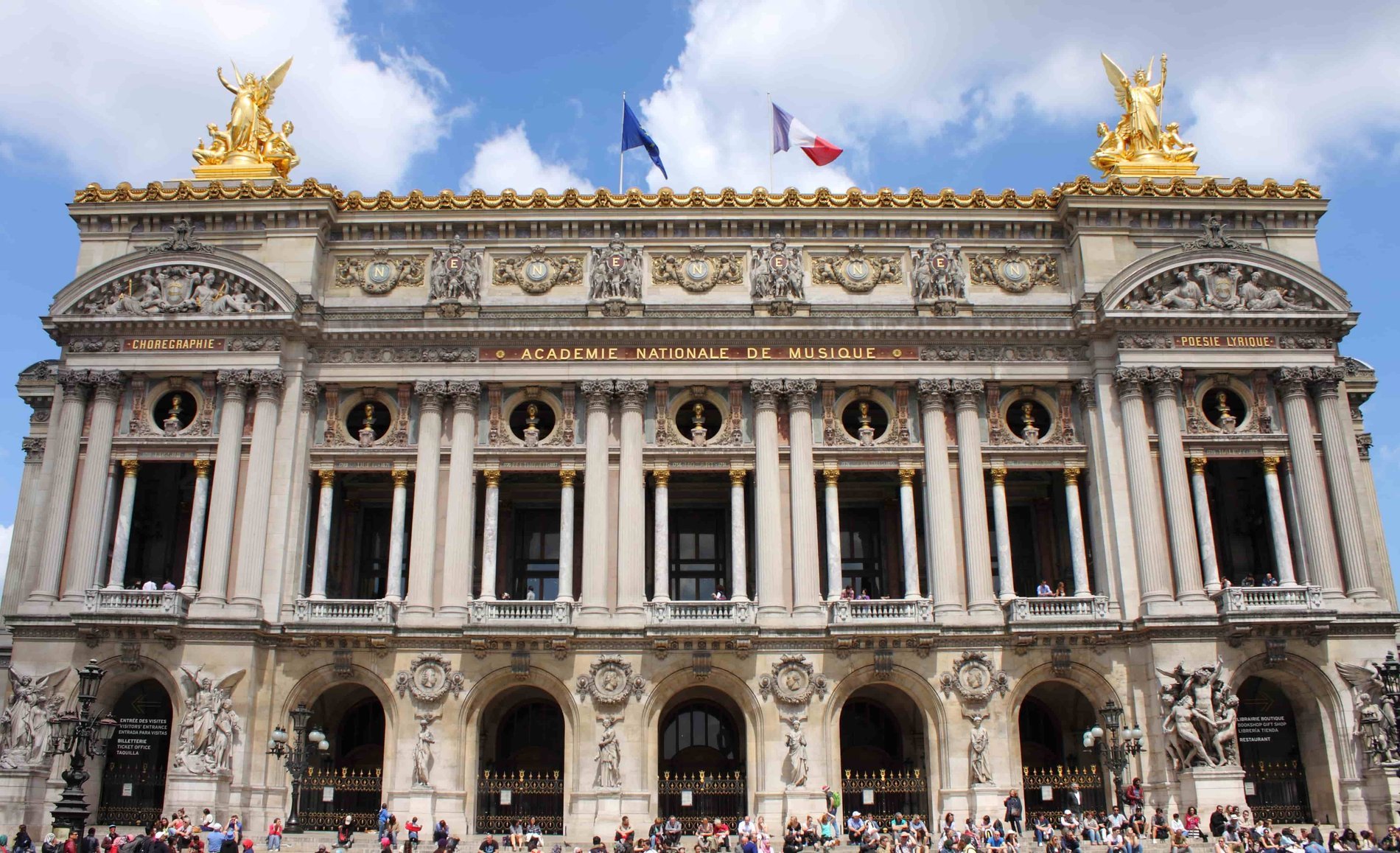Opéra Garnier
Opéra Garnier
9Hotel Opéra, near the Opéra Garnier
 The Opéra Garnier is four metro stations away from 9 Hotel Opéra (Line 7, Opéra station)
The Opéra Garnier is four metro stations away from 9 Hotel Opéra (Line 7, Opéra station)
Discover the emblematic Opéra close to your accommodation at 9 Hotel Opéra. Not just a festive and cultural location, the Opéra Garnier or "Palais Garnier" is one of the oldest buildings in Paris. Constructed by the architect Charles Garnier in 1875, legend has it that the Opéra was built over a subterranean lake...
A hotel in the Opéra District
The Palais Garnier is renowned not only for its history and architecture but also for the neighborhood in which it was built. Its location was no coincidence, as this district on the right bank of the Seine in Paris has long been home to theaters, music venues, and cultural spaces. Ideally situated between the Palais Garnier and Gare de l’Est, our hotel allows visitors to explore the cultural heart of Paris.
To the south, the Grands Boulevards host the famous theaters that have made this area legendary, as well as the Grévin museum. Between street Vivienne, which leads to Palais Brongniart—formerly the Paris stock exchange and now a convention center hosting cultural exhibitions—and Rue Montmartre, which crosses the Sentier district and reaches Saint-Eustache at the city's center, history and culture blend seamlessly.
To the southwest, the Porte Saint-Denis stands beneath Gare de l’Est and Gare du Nord; to the southeast, the former National Library of France still houses the Richelieu site. To the north, the Trinité, Notre-Dame-de-Lorette, and Saint-Georges districts embody the essence of Romantic-era Paris. Finally, following Rue de Rochechouart leads to Anvers, on the Montmartre hill, where one can head east toward Barbès or west toward Pigalle.
These neighborhoods are among the most inviting for leisurely strolls on the right bank of Paris and represent the city's cultural vibrancy. This is precisely why the Paris Opera was integrated into this area by Baron Haussmann, as part of the grand transformations of the city under Emperor Napoleon III.
From the Paris Opera to the Palais Garnier
Built to replace the street Le Peletier theater, which was constructed during the Revolution to host theater troupes, the Paris Opera was initiated in 1858, with its first stone laid in 1862. Under the direction of Baron Haussmann—who oversaw the most significant urban transformation Paris had ever known—Charles Garnier was entrusted with designing a venue that could host theater, music, and dance performances, befitting Napoleon III’s grand ambitions.
Located at Place de l’Opéra, it sits at the northern end of Avenue de l’Opéra, facing the Louvre Museum and forming a triangle with Boulevard des Italiens, Boulevard Haussmann, and street Auber.
The Franco-Prussian War of 1870 temporarily halted construction, but work resumed under the Third Republic in 1873. The opera house was finally inaugurated by President Mac Mahon on January 5, 1875. Until 1989, it was commonly known as the "Paris Opera," but when the Opéra Bastille was inaugurated for the bicentennial of the Revolution, the name "Opéra Garnier" or "Palais Garnier" was adopted to distinguish the two venues, both of which now operate under the Paris National Opera.
The spectacular architecture of the Opéra Garnier
Charles Garnier designed the Paris Opera with an architectural style that became emblematic of the Second Empire. Drawing inspiration from the late Renaissance Italian palaces he studied during his stay at the Villa Medici in Rome, Garnier even claimed to have followed Michelangelo’s method of personally designing every architectural plan, as Michelangelo did for St. Peter’s Basilica in Rome. Nothing was left to chance—Garnier meticulously supervised every aspect of construction, resulting in a structure as stunning as it is grandiose.
The building’s main façade is adorned with sculptures representing “Instrumental Music,” “Poetry,” “Dance,” and “Lyric Drama.” The grand staircase leading to the main auditorium is designed to immerse visitors in a musical atmosphere. Above the entrance, medallions featuring the likenesses of Bach, Haydn, Pergolesi, and Cimarosa overlook the scene.
The loggia on the first floor provides balance to the building’s façade and is adorned with busts of famous composers, including Beethoven, Auber, Meyerbeer, Mozart, Spontini, Quinault, Rossini, and Halévy.
The western entrance is crowned by a magnificent bronze eagle, symbolizing the empire. Some critics have argued that the façade was designed to flatter the emperor, and it was never fully completed. The "Emperor’s Pavilion" was intended for discreet access to the imperial box and also leads to the opera’s extraordinary library-museum.
Extraordinary interior features of the Paris Opera
Inside, the Opera’s Rotunda—also known as the “Glacier Rotunda”—is among its most breathtaking artistic features, alongside the Mosaics Antechamber and the Grand Foyer. The Grand Foyer evokes the Hall of Mirrors at the Palace of Versailles as well as the galleries of Renaissance castles along the Loire Valley. Adorned with columns, painted ceilings, mirrors, and exquisite chandeliers, it leads to two rotundas topped with frescoes: the Salon de la Lune (Moon Salon) and the Salon du Soleil (Sun Salon).
The grand ceremonial staircase leading to the auditorium, salons, and foyers is a masterpiece of design, with an unprecedented height and scale at the time of its construction. The use of marble, onyx, copper, paintings, mosaics, and gold leaf makes it one of the most admired features of the Palais Garnier. However, the true highlight is, of course, the main auditorium, decorated by some of the greatest artists of its time—making it the ultimate reason for visiting the Opéra Garnier.
Place de l'Opéra, 75009 Paris
More information about the Opéra Garnier


